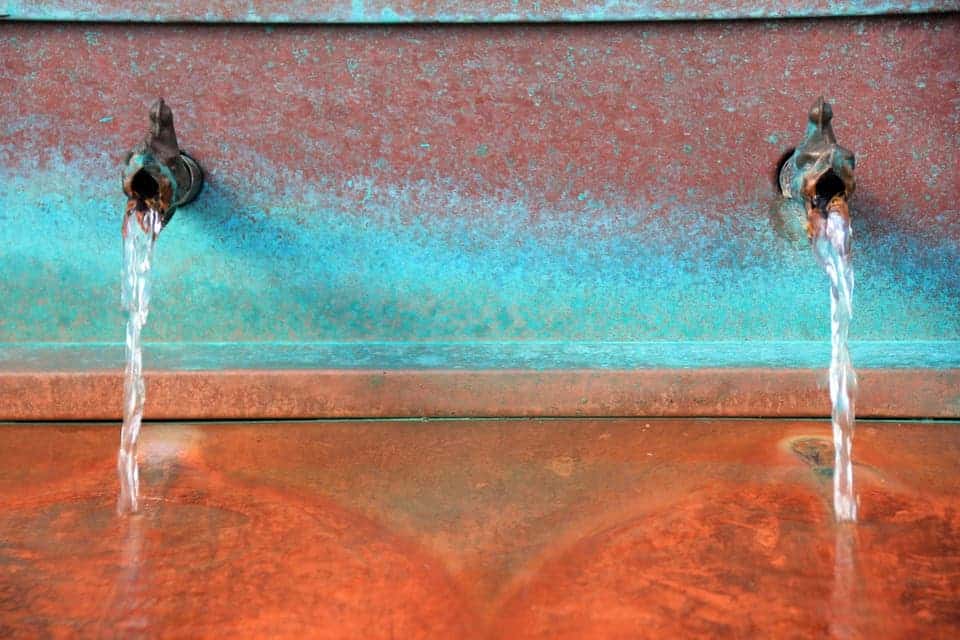In certain cases, rivers have lost as much as 50% of their flow.

New research led by a hydrologist at the University of Arizona warns that massive groundwater pumping since the 1950s is bleeding rivers dry. The findings can help shape policy for the proper management of U.S. water resources, the authors say, and should be of interest especially for states such as Arizona that manage groundwater and surface water separately.
Running low
“We’re trying to figure out how that groundwater depletion has actually reshaped our hydrologic landscape,” said first author Laura Condon, a University of Arizona assistant professor of hydrology and atmospheric sciences.
“What does that mean for us, and what are the lasting impacts?”
According to Condon, this is the first study to look at the impact of past groundwater pumping across the entire U.S. Other research has dealt with this issue, but only on smaller scales.
The team started by using computer models to see what the state of U.S. surface waters would have been today in the absence of human consumption. They then compared that with surface water changes recorded since large-scale groundwater pumping first began in the 1950s.
The model maps ground and surface waters onto a grid of squares (0.6 miles per side) that covers most of the U.S., excluding coastal regions. It included all the groundwater down to 328 feet (100 meters) below the land surface. The analysis focused primarily on the Colorado and Mississippi River basins and looked exclusively at the effects of past groundwater pumping because those losses have already occurred.
Estimates from the U.S. Geological Survey (USGS) place the loss of groundwater volume between 1900 and 2008 at 1,000 cubic kilometers. “The rate of groundwater depletion has increased markedly since about 1950,” it adds, peaking between 2000 and 2008 “when the depletion rate averaged almost 25 km3 per year (compared to 9.2 km3 per year averaged over the 1900–2008 timeframe).” One thousand cubic kilometers of water corresponds to one billion liters or 264.170.000 gallons.
“We showed that because we’ve taken all of this water out of the subsurface, that has had really big impacts on how our land surface hydrology behaves,” she said. “We can show in our simulation that by taking out this groundwater, we have dried up lots of small streams across the U.S. because those streams would have been fed by groundwater discharge.”
Too much of a good thing
Groundwater is a very valuable resource across the world. When surface water sources are scarce, absent, or overtaxed, groundwater is pumped to supply our domestic and economic needs. When misused, it can lead to enormous crises, like the one facing India today.
Among other things, it is also used for agriculture and provides hydration for wild vegetation. Some native vegetation like cottonwood trees will eventually die if the water table drops below their roots. In the United States, it is the source of drinking water for about half the total population and nearly all of the rural population, and it provides over 50 billion gallons per day for agricultural needs, according to the same article from USGS.
The team found that streams, lakes, and rivers in western Nebraska, western Kansas, eastern Colorado and other parts of the High Plains have been particularly hard hit by groundwater pumping. Those findings agree with other smaller-scale studies in the region.
“With this study, we not only have been able to reconstruct the impact of historical pumping on stream depletion, but we can also use it in a predictive sense, to help sustainably manage groundwater pumping moving forward,” says Reed Maxwell, the paper’s co-author.
“We can do things with these model simulations that we can’t do in real life. We can ask, ‘What if we never pumped at all? What’s the difference?'”
The regions that were most sensitive to a lowering water table are east of the Rocky Mountains, where the water table was initially shallow (at the depth of 6-33 feet or 2-10 meters). Ground and surface waters are more closely linked in these areas, so depleting the groundwater is more disruptive for streams, rivers, and by extension, vegetation. The western U.S. has deeper groundwater, so reducing their volume didn’t have as powerful an effect on surface waters.
Condon says that other research has shown that the areas of the Midwest where precipitation used to equal evaporative demand — i.e. where irrigation wasn’t required for crops — are becoming more arid. Those are some of the regions where groundwater pumping has reduced surface waters.
“In the West, we worry about water availability a lot and have many systems in place for handling and managing water shortage,” Condon said. “As you move to the East, where things are more humid, we don’t have as many systems in place.”
The paper “Simulating the sensitivity of evapotranspiration and streamflow to large-scale groundwater depletion” has been published in the journal Science Advances.



